2024 NH Panther $5k Black Excellence Award Winner
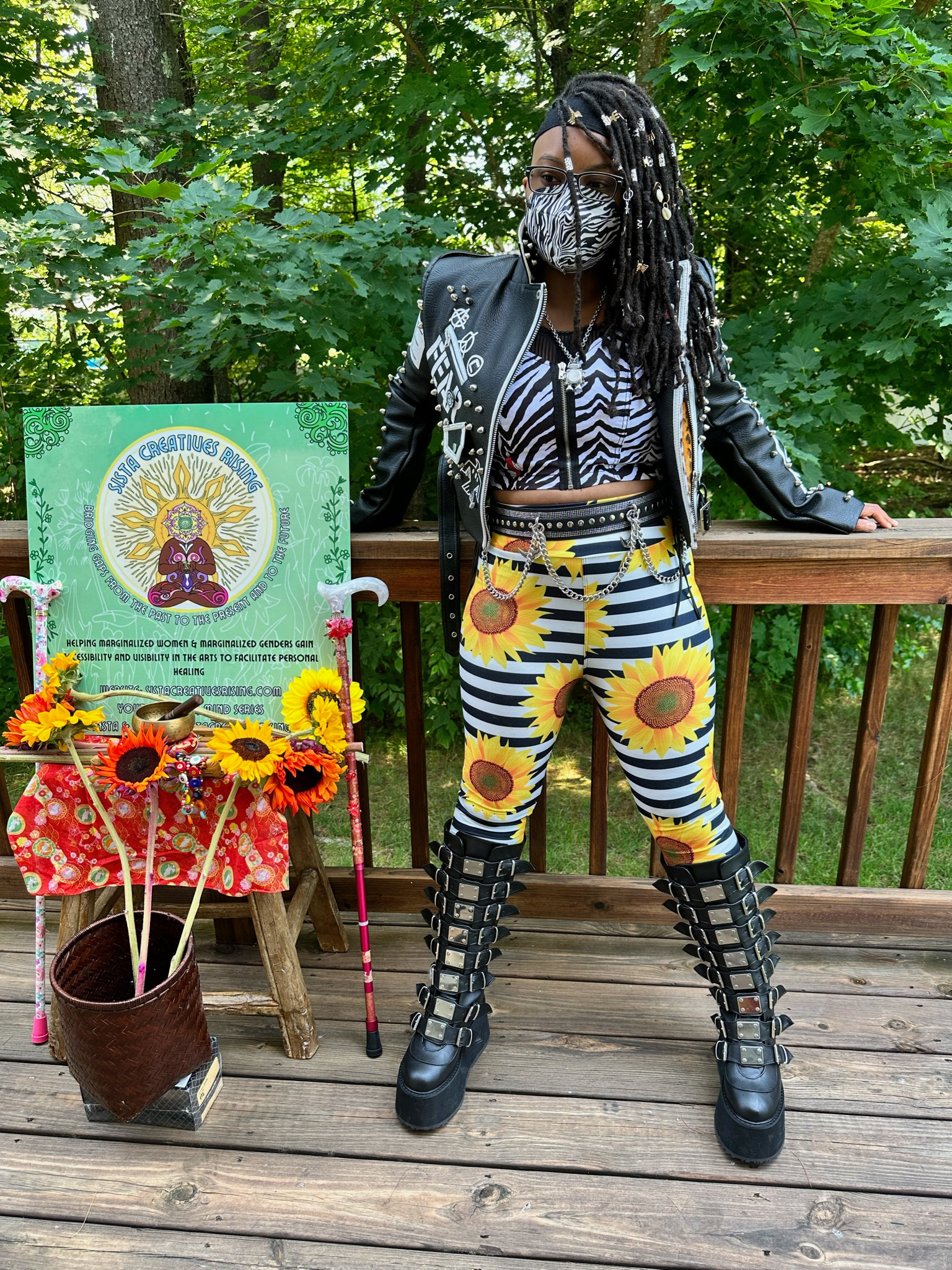
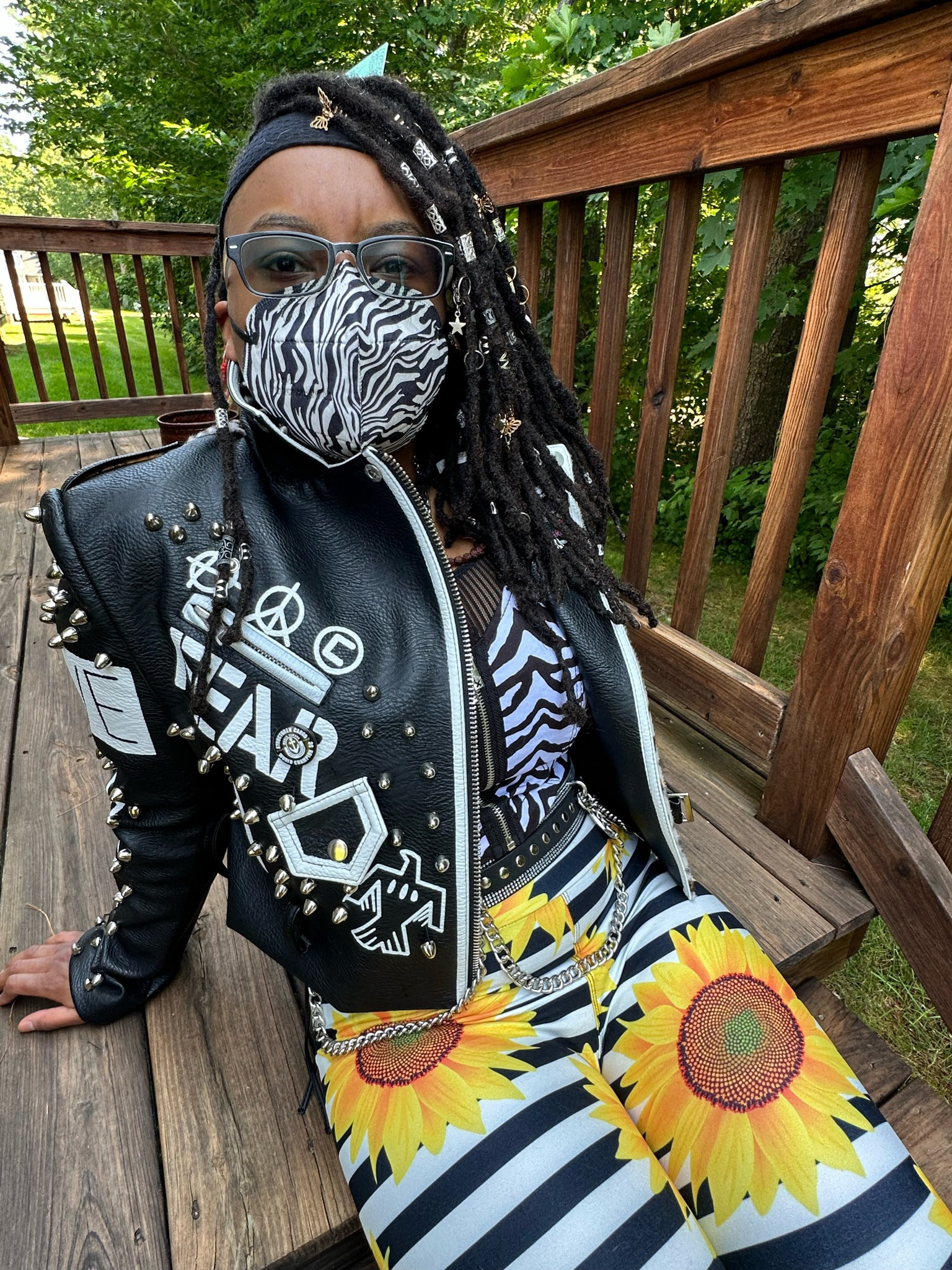
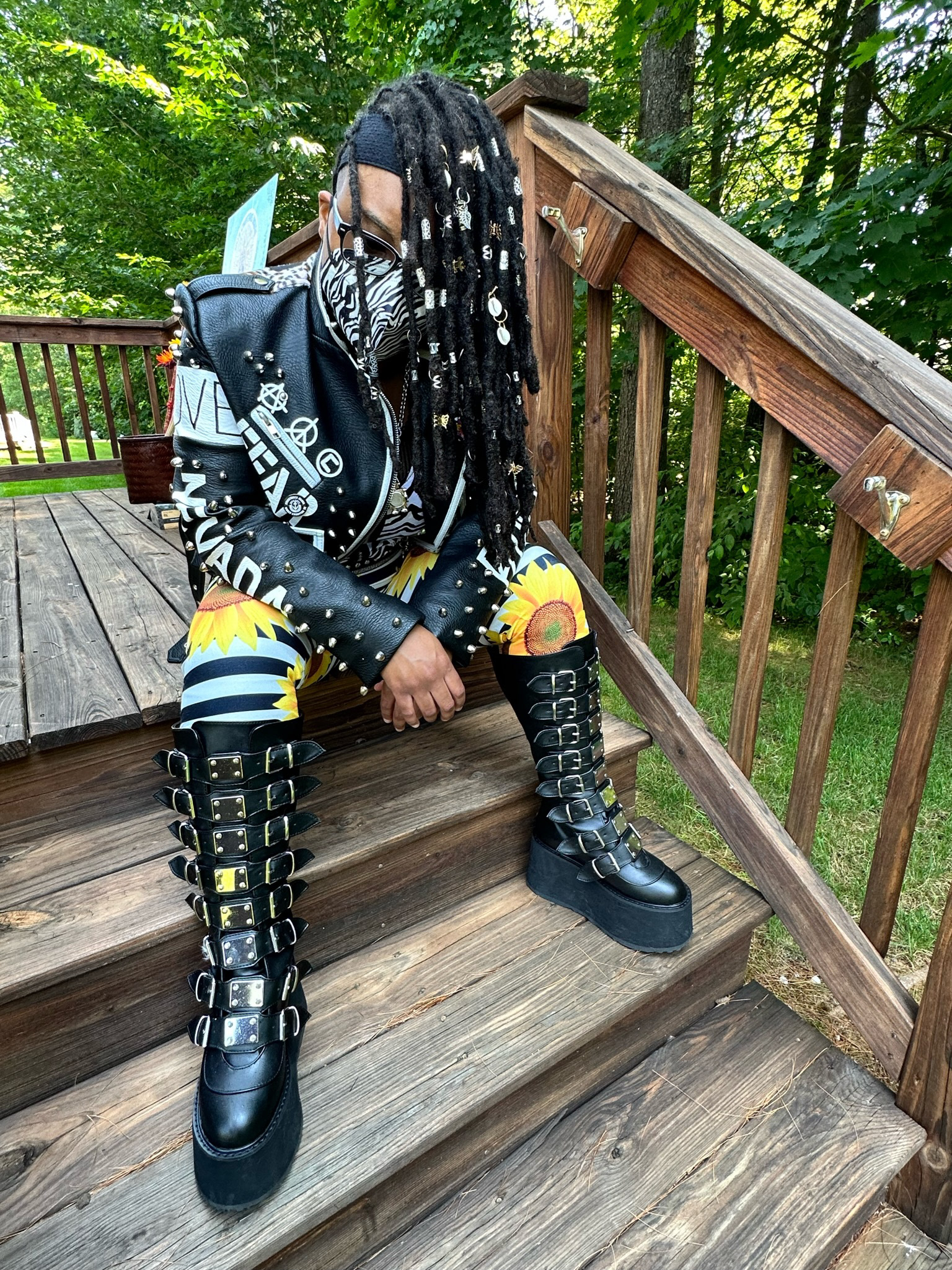
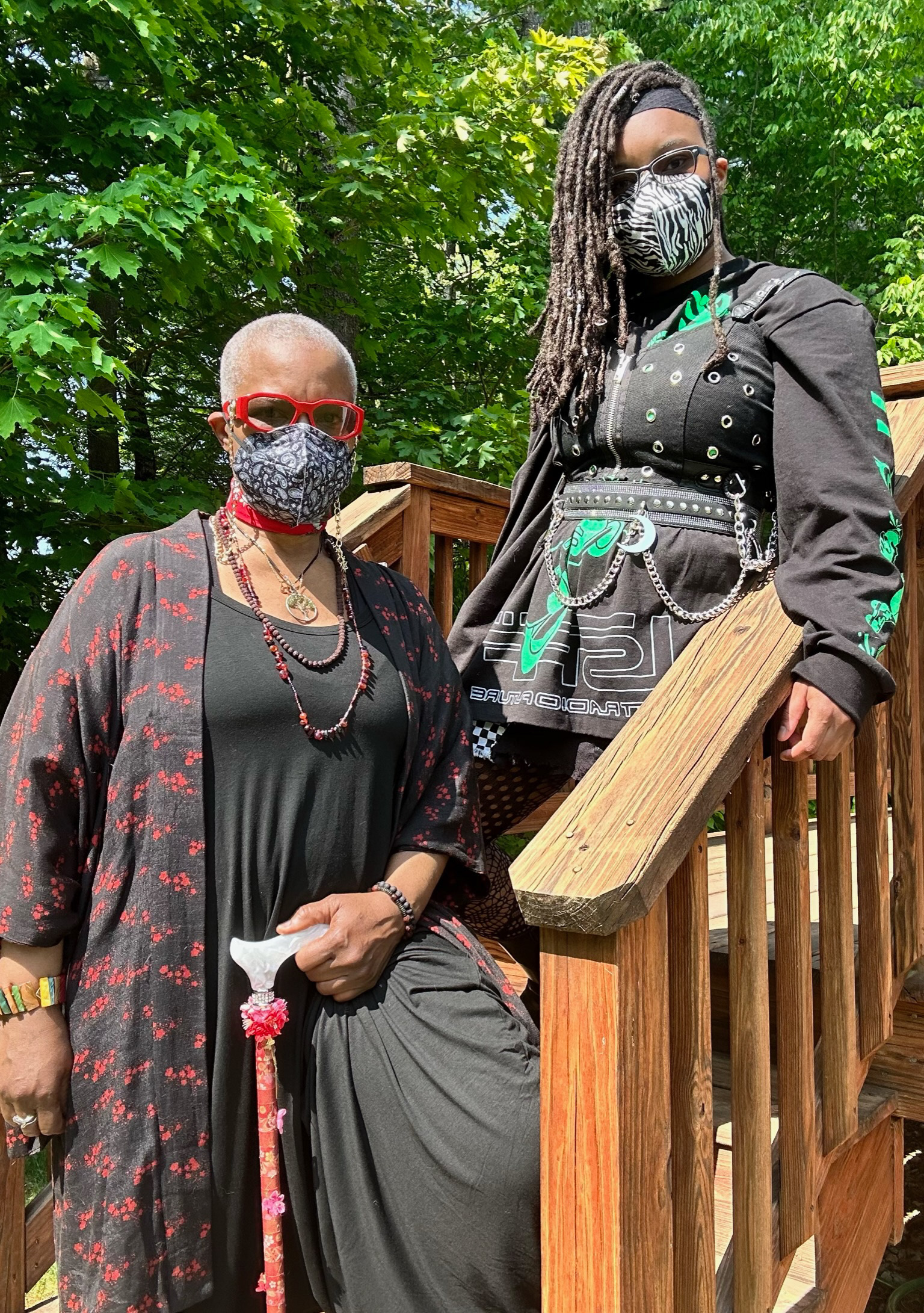
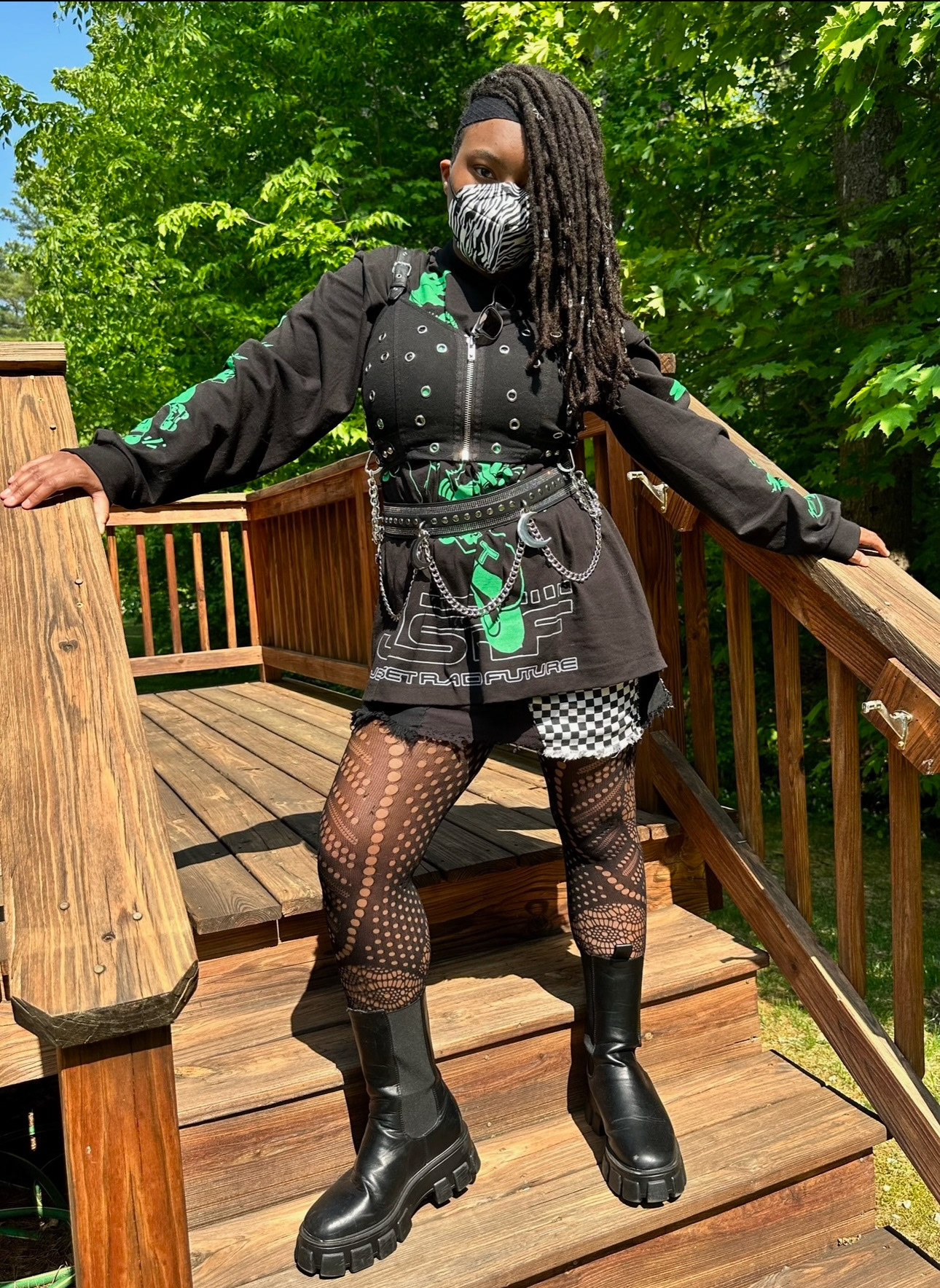
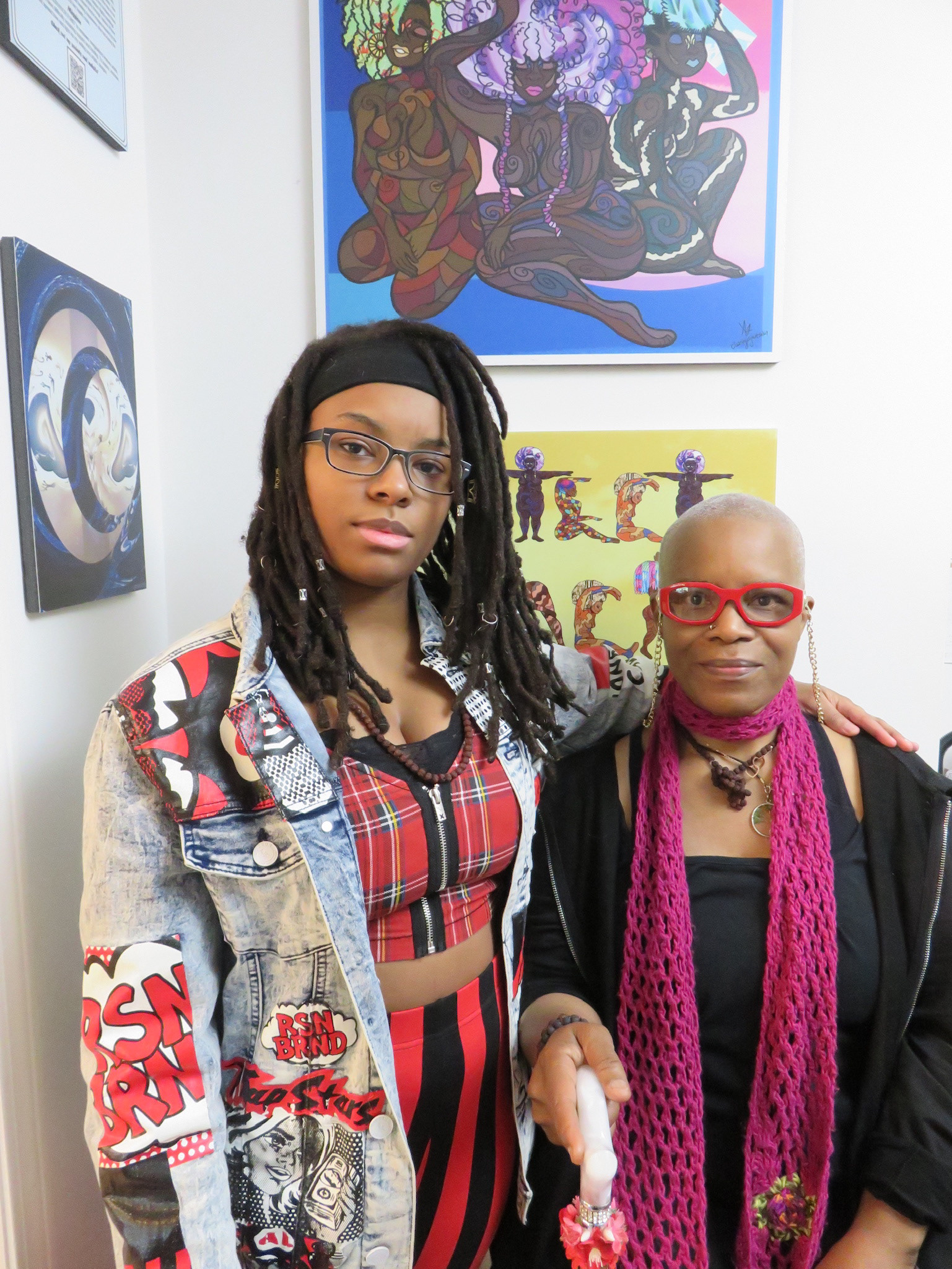
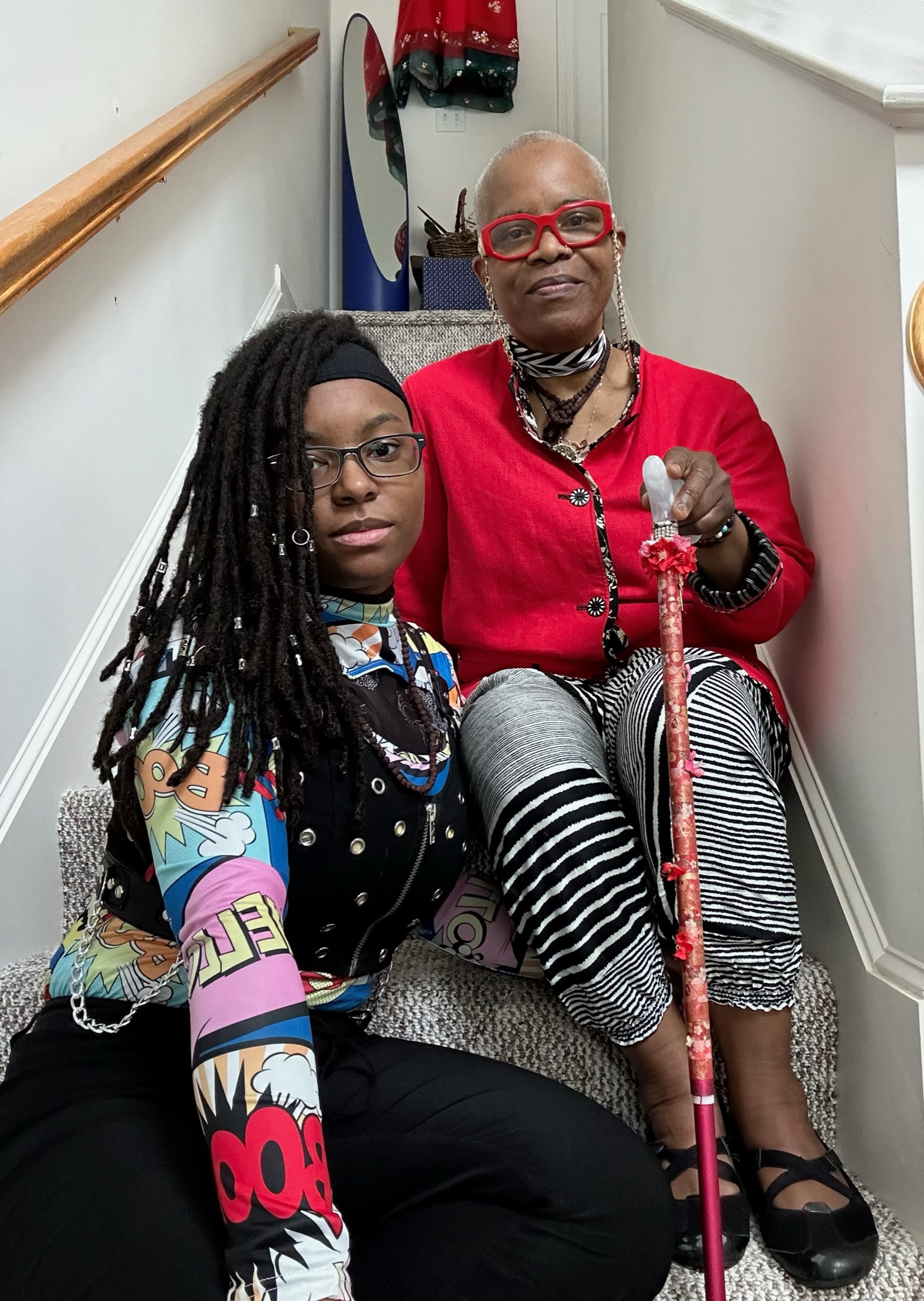
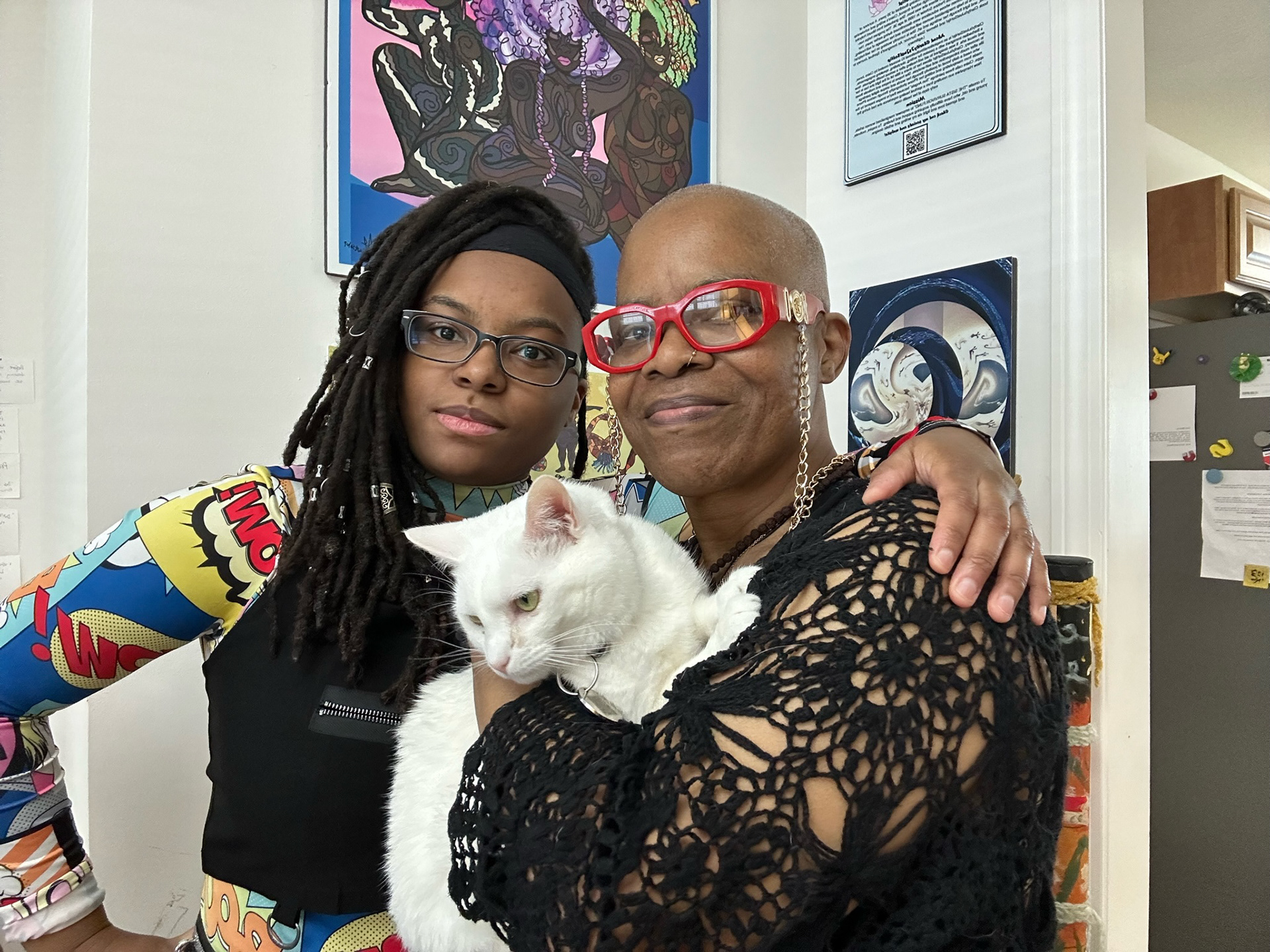
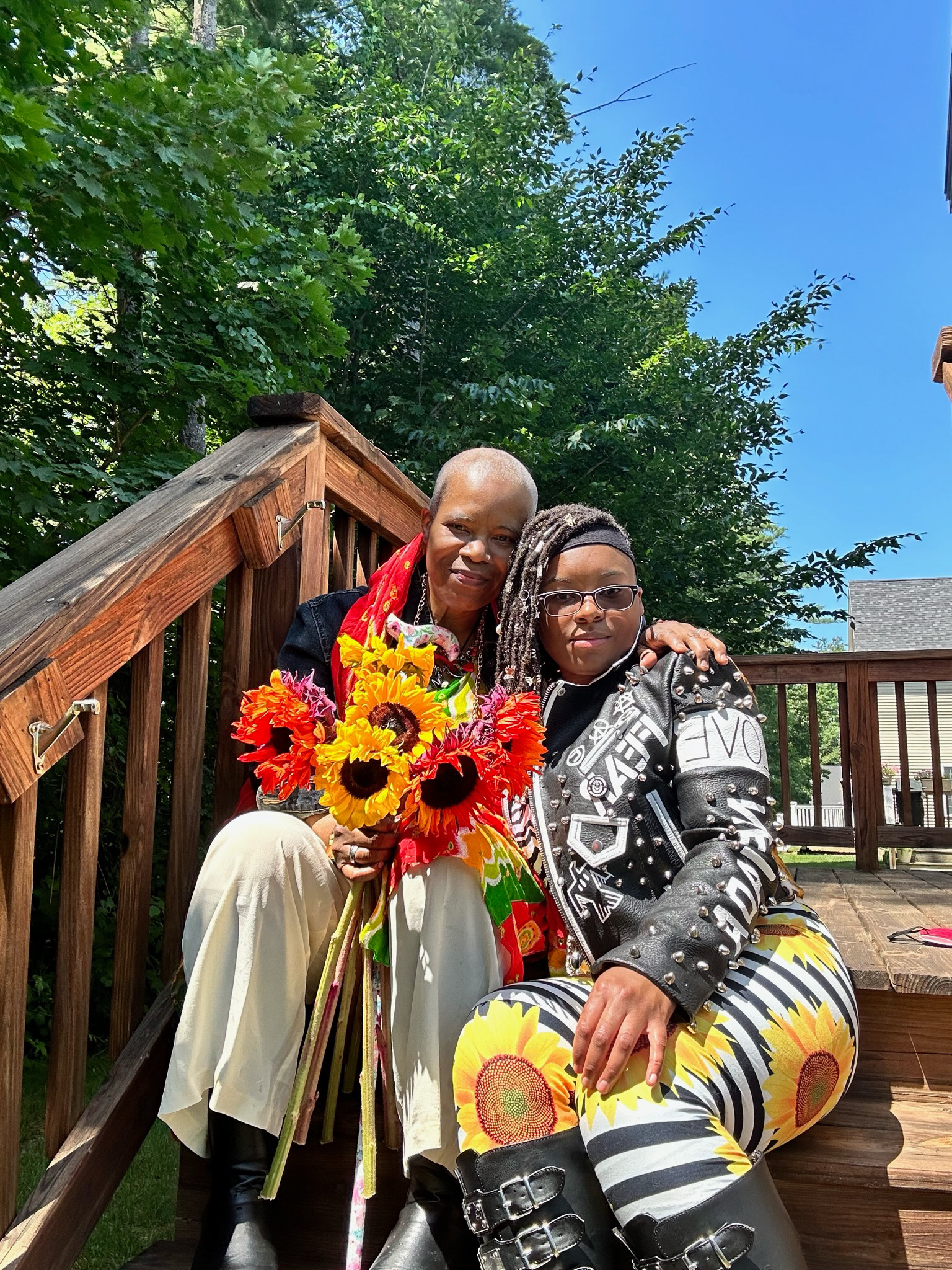
Artist Bio
Amaranthia Sepia is an African-American and Caribbean (Bajan) invisible disabilities activist and multi-hyphenate creative focused on illustration, graphic art, and character design. Her mediums are ink and digital art. Amaranthia Sepia feels it's critical to use her voice to facilitate the representation of marginalized voices. She is also a self-taught art director with a focus on minority-inclusive, unconventional activist artworks. Sepia was previously a lead organizer/art coordinator for the grassroots collective ARTivism Initiative (now disbanded), and was an artist and collaborator for LA mental health non-profit, The Painted Brain, for their disability art show, "Discovering a Place for Us."
As a Buddhist Black, invisibly disabled woman with C-PTSD, panic disorder, and agoraphobia, she highlights unconventional experiences through art with a spiritual touch, often inspired by nature. Amaranthia and Mom, Claire Jones, co-founded Sista Creatives Rising (SCR), helping marginalized artists through virtual disability-accessible events such as “Art & Mind” and The Sistas Uprising Fund microgrants.
Returning to America after spending her childhood in Japan, Sepia was severely bullied. Creating works based on fond memories of Tokyo taught her the healing power of art. Since 13, she's coordinated art events on anti-bullying advocacy, BLM, disability, and women's mental health.
Amaranthia won the Haley Rae Martin Full Scholarship to Kimball Jenkins Art School and created an anti-bullying project, "Do You Know Who I Am?", which toured local schools in New Hampshire but ultimately did not find support. Instead, from age 13 to 18, she graduated from an online homeschooling program called VLACS. She continued to create renamed her anti-bullying project to “I'm Proud of Who I Am!" as a touring local library gallery show, making mental health advocacy art series such as comic-style project, "Emo Bunny: Anxiety Monster," featuring a bunny girl with severe anxiety; "Hidden Demons of Anxiety" inspired by Japanese ogre masks and C-PTSD; and "Surviving In Isolation: The Black Mental Health Experience."
Amaranthia was previously a resident of Socially Distant Art 2022-23, a virtual residency about disability accessibility, and the 2023-24 Northstar Black Cooperative Fellowship Cohort with her Mom, Claire. She's won the 2024 NH Panther Black Excellence Fund Grant, Hannan Gallery's Emerge Festival 1st Place Next Gen Award, and the 2024 New Hampshire Racial Unity Team's Art & Poetry 1st Place Adult Prize. Amaranthia recently became a SowTrueSeed 2025 Seed Packet Artist, Healing Justice In Practice Magazine Featured Artist, and an artist at NH Children’s Museum’s 2025 Curious Creature’s Exhibit. Now 25, she provides these groups tools for utilizing their creativity to gain confidence to make a difference in their communities.
My Goal With Sista Creatives Rising (SCR)
My future plans revolve around Sista Creatives Rising (SCR).
SCR seeks to strengthen our community by increasing the visibility of creative marginalized women and marginalized genders and providing them with affordable and accessible resources. At the same time, we're working to address the lack of payment artists receive when accepted by open calls by paying all artists we work with, and providing artists grants through The Sistas Uprising Fund. My plan, with my Mom, is to expand SCR by gaining funds to continue to run free Art & Mind virtual film events to amplify the stories of small, marginalized artists, continue to pay all Art & Mind team members & creatives and develop virtual workshops and presentations teaching artists how to incorporate disability accessibility/justice principles into their creative projects. Being on SSI since 19, my dream is to become independent financially through SCR, which is an endeavor helping me heal and thrive despite being isolated due to health issues. Being Black, female, and agoraphobic, it's difficult for me to be in physical spaces. Virtual galleries and virtual community building events have been a saving grace. It's crucial to have accessible spaces for those with physical and emotional disabilities. Without these spaces, we face severe isolation. As COVID and mask mandates have reduced, eliminating virtual spaces has become common, further isolating disabled folks who finally found a space for themselves. This has been devastating as someone who is also immunocompromised and has parents who are immunocompromised.
SCR seeks to strengthen our community by increasing the visibility of creative marginalized women and marginalized genders and providing them with affordable and accessible resources. At the same time, we're working to address the lack of payment artists receive when accepted by open calls by paying all artists we work with, and providing artists grants through The Sistas Uprising Fund. My plan, with my Mom, is to expand SCR by gaining funds to continue to run free Art & Mind virtual film events to amplify the stories of small, marginalized artists, continue to pay all Art & Mind team members & creatives and develop virtual workshops and presentations teaching artists how to incorporate disability accessibility/justice principles into their creative projects. Being on SSI since 19, my dream is to become independent financially through SCR, which is an endeavor helping me heal and thrive despite being isolated due to health issues. Being Black, female, and agoraphobic, it's difficult for me to be in physical spaces. Virtual galleries and virtual community building events have been a saving grace. It's crucial to have accessible spaces for those with physical and emotional disabilities. Without these spaces, we face severe isolation. As COVID and mask mandates have reduced, eliminating virtual spaces has become common, further isolating disabled folks who finally found a space for themselves. This has been devastating as someone who is also immunocompromised and has parents who are immunocompromised.
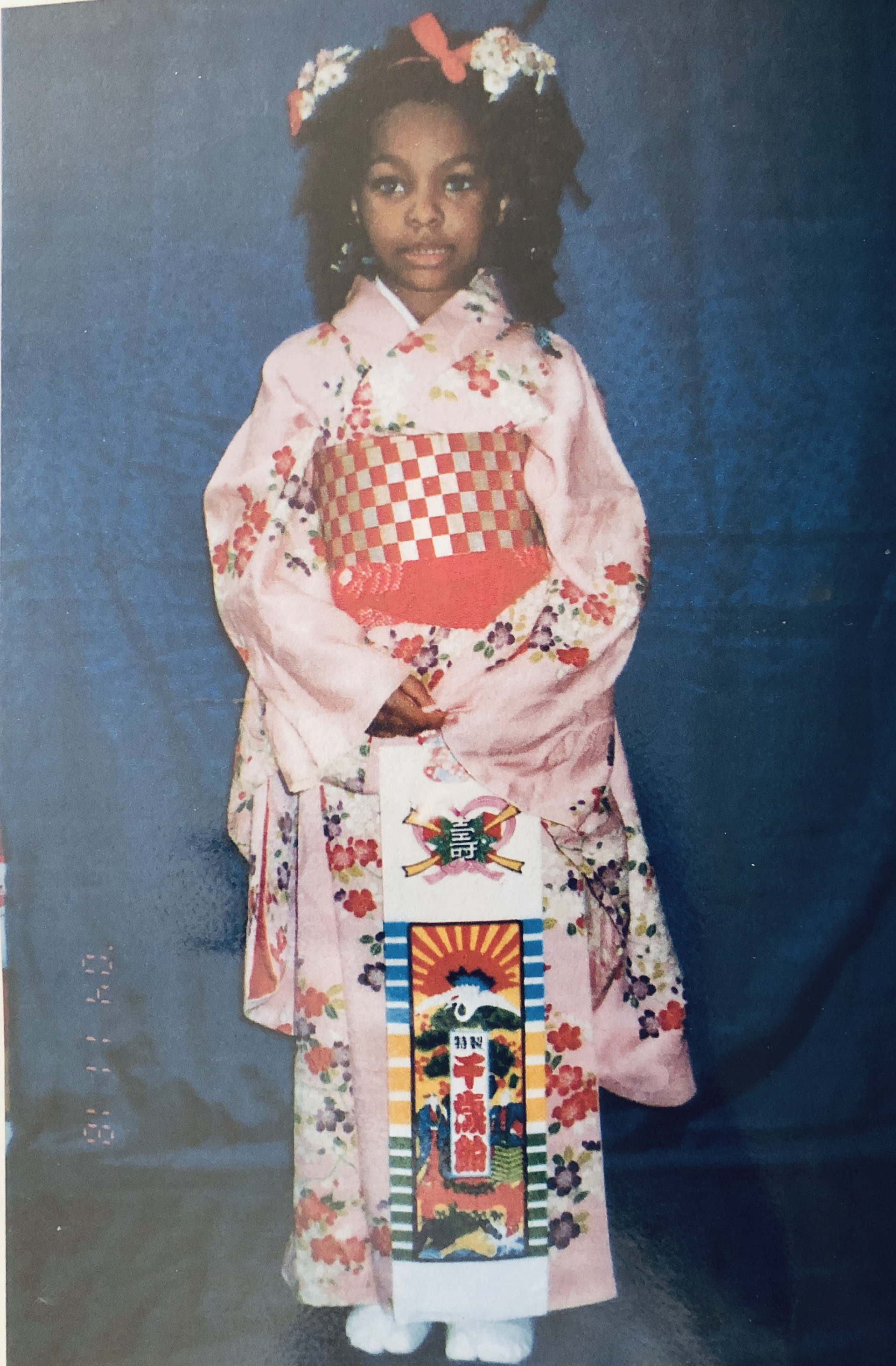
Kimono Event at my preschool in Japan

Modeling in Japan
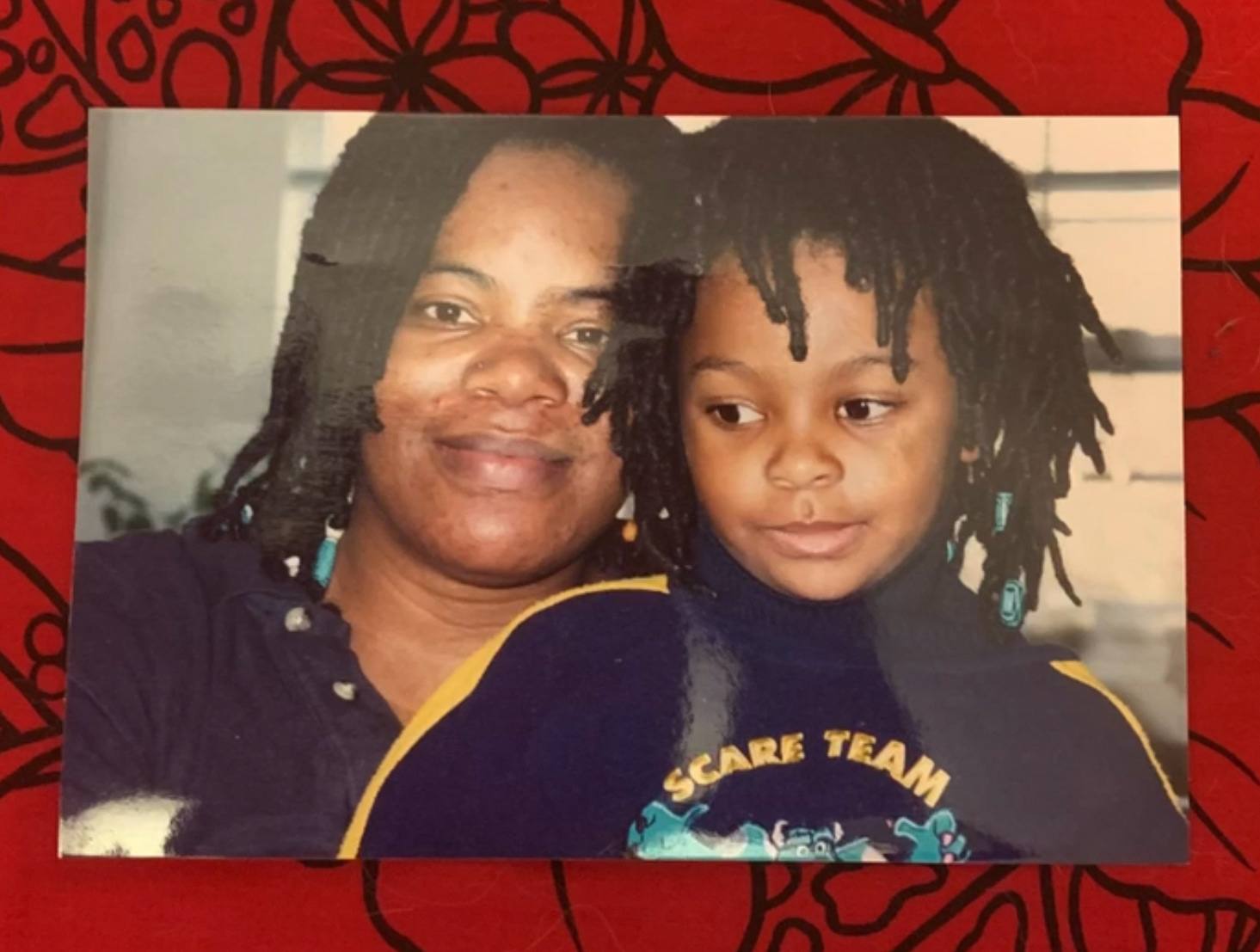
My Mom and I in the 2000s
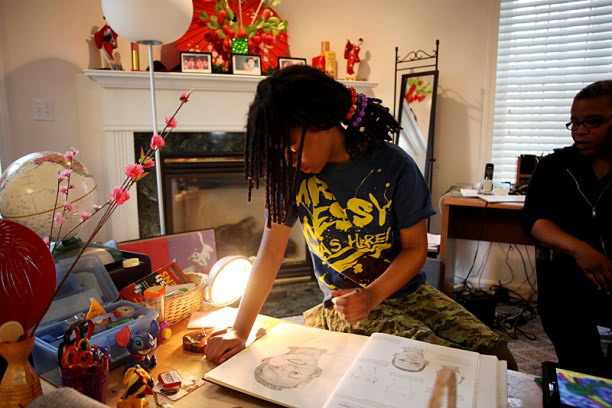
Photo for Concord Monitor 2011
Why Do I Create?
I create to provide representation of disabilities, visible and invisible, and to educate people about racial disparities. With greater accessibility and inclusivity, we would see more representation in media for marginalized groups. This would translate into greater tolerance and increased visibility of disability, race, and gender diversity in today's culture. This philosophy is interwoven through my work.
I lived in Tokyo, Japan, between the ages of 4 and 6, and attended PAL & Nishimachi International School. Living in a majority Buddhist society while being born into a family practicing Japanese Buddhism caused my artwork to be heavily influenced by spirituality and Japanese mythology. Ink pens combined with digital art are my primary medium. The reverse culture shock was severe after returning from Japan to New England. I always tried to connect my art to Japanese culture, as it was my second comfort. When I turned 8, I remember sitting in the back of the family car and viewing a vibrant sunflower field that seemed to go on infinitely. A baby blue sky with plush, white clouds floated above. After that moment, it felt like a part of me awakened creatively. I told my Mom immediately about this spiritual experience; soon after, she encouraged me to draw the scene.
At age 13, I became homeschooled online due to severe racial trauma and bullying due to living in a majority-white community. My reliable friend was art. I continued creating while living isolated through graduation from high school until now. As I slowly learned about my issues with racial trauma, C-PTSD, panic disorder, and agoraphobia, my experiences with trauma and racism slowly seeped into my work. My anxiety diagnosis at age 17 helped me come to terms with being invisibly disabled. It pushed me to express my experiences unapologetically to help others feel less alone.
I lived in Tokyo, Japan, between the ages of 4 and 6, and attended PAL & Nishimachi International School. Living in a majority Buddhist society while being born into a family practicing Japanese Buddhism caused my artwork to be heavily influenced by spirituality and Japanese mythology. Ink pens combined with digital art are my primary medium. The reverse culture shock was severe after returning from Japan to New England. I always tried to connect my art to Japanese culture, as it was my second comfort. When I turned 8, I remember sitting in the back of the family car and viewing a vibrant sunflower field that seemed to go on infinitely. A baby blue sky with plush, white clouds floated above. After that moment, it felt like a part of me awakened creatively. I told my Mom immediately about this spiritual experience; soon after, she encouraged me to draw the scene.
At age 13, I became homeschooled online due to severe racial trauma and bullying due to living in a majority-white community. My reliable friend was art. I continued creating while living isolated through graduation from high school until now. As I slowly learned about my issues with racial trauma, C-PTSD, panic disorder, and agoraphobia, my experiences with trauma and racism slowly seeped into my work. My anxiety diagnosis at age 17 helped me come to terms with being invisibly disabled. It pushed me to express my experiences unapologetically to help others feel less alone.
What I Bring To A Group
As an invisibly disabled creative and someone who works with disabled creatives, I've learned to be highly organized & flexible with time. This is crucial if you are dedicated to deconstructing internalized ableism through accessibility, accommodations, and equity. If you're not flexible, you can shut out outstanding individuals. I bring awareness everywhere I go about this because I wouldn't be where I am now without accommodations.
In addition, I hope to show artists that virtual disability accessibility can be incorporated into our creative projects via a combination of mediums and creative brainstorming. Something I've heard is 'accessibility is a burden,' however, if we incorporate accessibility as part of the artistic process, such as using artwork descriptions to tell informative stories about our art via creative writing, then it won't feel that way.
As part of our work for Sista Creatives Rising, my Mom and I advocate for virtual and hybrid spaces for disabled, chronically ill/immunocompromised people, along with people who aren't disabled but want to stay safe from COVID and other illnesses. We use this platform to also educate people about how masking is a two-way effort to protect the most vulnerable in society. I hope to show others the importance of advocating for invisibly disabled folk who are high-risk.
Finally, I hope to show others that art celebrates life, community, and culture and can be woven into all aspects of society. I strive to rediscover that feeling of joy Japan gave me when I was younger. To use art to find that feeling again and share that feeling with others is my ultimate goal. When institutions or people begin to select, criticize or judge 'art' through their limited lens of interpretation - it questions the purpose of art itself: to represent a true reflection of society, culture, and diverse life experiences.
In addition, I hope to show artists that virtual disability accessibility can be incorporated into our creative projects via a combination of mediums and creative brainstorming. Something I've heard is 'accessibility is a burden,' however, if we incorporate accessibility as part of the artistic process, such as using artwork descriptions to tell informative stories about our art via creative writing, then it won't feel that way.
As part of our work for Sista Creatives Rising, my Mom and I advocate for virtual and hybrid spaces for disabled, chronically ill/immunocompromised people, along with people who aren't disabled but want to stay safe from COVID and other illnesses. We use this platform to also educate people about how masking is a two-way effort to protect the most vulnerable in society. I hope to show others the importance of advocating for invisibly disabled folk who are high-risk.
Finally, I hope to show others that art celebrates life, community, and culture and can be woven into all aspects of society. I strive to rediscover that feeling of joy Japan gave me when I was younger. To use art to find that feeling again and share that feeling with others is my ultimate goal. When institutions or people begin to select, criticize or judge 'art' through their limited lens of interpretation - it questions the purpose of art itself: to represent a true reflection of society, culture, and diverse life experiences.
